
Middleton is a small village in the North Warwickshire district of the county of Warwickshire, England. [1] The population of the civil parish at the 2011 census was 630. [2]

Middleton is a small village in the North Warwickshire district of the county of Warwickshire, England. [1] The population of the civil parish at the 2011 census was 630. [2]


At the time of the Domesday Book Middleton was under a Norman Overlord Hugh de Grandmesnil who had several holdings in Warwickshire. When he died it passed to the Marmions of Tamworth. In 1291 the estate was divided into three and Middleton was held by the de Frevilles. In the mid 15th century Sir Richard Bingham married Margaret Willoughb (born Freville) of Nottinghamshire. [3] There is a brass memorial to Sir Richard in the Parish Church. When Margaret died in 1493 she left the estate to her grandson (by her first marriage) Sir Henry Willughby. Ornithologist Francis Willughby was born at Middleton Hall in 1635. The Hall stayed in the family until 1924.
St. John the Baptist Church holds an ornate memorial commemorating Francis Willughby, his parents, Francis senior and Cassandra, and his son, also Francis; this was erected by his second son, Thomas Willoughby. [4] The title of Baron Middleton, of Middleton in the County of Warwick, was created in 1711 by Queen Anne as a hereditary barony in the Peerage of Great Britain for Thomas Willoughby, of Wollaton Hall in the County of Nottingham (1670–1729).

By the late 1970s Middleton Hall and the surrounding estate came under the ownership of the Amey Roadstone Construction (ARC) for sand and gravel extraction. The Hall and its outbuildings, with some remains dating back to the Norman period, was in serious danger of being lost. It was saved by the establishment of the Middleton Hall Trust in 1980, a group of volunteers who are restoring the Hall with the help of local authorities and national bodies. ARC have assisted in this by renting at a low rate the Hall and surroundings to the Trust, and by restoring a Tudor period stable block as a craft centre.
By the 1980s Middleton was in the middle of a 'leisure area' with The Belfry golf resort to the south, Aston Villa Football Club's Bodymoor Heath Training Ground to the east, Drayton Manor Theme Park to the north and the M6 Toll being built to the west. Demographic change brought about by the recession of the early 1980s, which saw many local farms and businesses fail, has led to many humble buildings being expanded into luxury homes. Various public entertainment and business sites were created. A children's farm, two garden centres and numerous small industrial units now attract many people from the surrounding urban areas.
In the 1990s one farm diversified into the car boot sale market. This now occupies several fields in the parish throughout the year, alternating between sites at weekends. Gravel excavation at the eastern boundary finished in this decade and two more leisure sites were established, Kingsbury Water Park at Bodymoor Heath and Middleton Lakes RSPB reserve. These have grown into busy centres in the first decade of the 21st century. In March 2010 the Government announced plans for an extension to the HS2 rail link that was already planned from London to Birmingham. This proposal, extending northwards, places a route just 300 yards to the east of the main village. An elevated track, some 80 yards wide and 20 yards high, would take up to 14 passenger trains, capable of 250 mph, an hour. Many local roadways would be affected.

Francis Willughby FRS was an English ornithologist and ichthyologist, and an early student of linguistics and games.

Baron Middleton, of Middleton in the County of Warwick, is a title in the Peerage of Great Britain, created in December 1711 for Sir Thomas Willoughby, 2nd Baronet, who had previously represented Nottinghamshire and Newark in Parliament. It was one of twelve new peerages created together and known as Harley's Dozen, to give a Tory majority in the House of Lords.
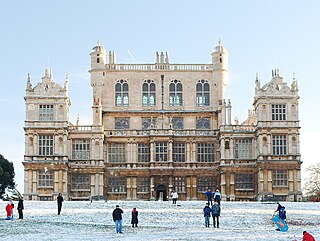
Wollaton Hall is an Elizabethan country house of the 1580s standing on a small but prominent hill in Wollaton Park, Nottingham, England. The house is now Nottingham Natural History Museum, with Nottingham Industrial Museum in the outbuildings. The surrounding parkland has a herd of deer, and is regularly used for large-scale outdoor events such as rock concerts, sporting events and festivals.
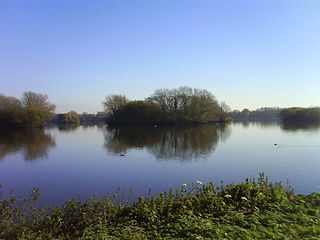
Kingsbury is a large village and civil parish in the North Warwickshire district of the county of Warwickshire, in the West Midlands region of England. The civil parish population at the 2011 census was 7,652.
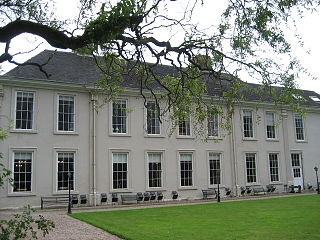
Middleton Hall is a Grade II* listed building dating back to medieval times. It is situated in the North Warwickshire district of the county of Warwickshire in England, south of Fazeley and Tamworth and on the opposite side of the A4091 road to Middleton village.
Wollaton is a suburb and former parish in the western part of Nottingham, England. Wollaton has two Wards in the City of Nottingham with a total population as at the 2011 census of 24,693. It is home to Wollaton Hall with its museum, deer park, lake, walks and golf course.
Whitacre Heath is a small village in the North Warwickshire district of the county of Warwickshire in England. It is one of 'The Whitacres' - Whitacre Heath, Nether Whitacre and Over Whitacre. Whitacre Heath is actually the heath of Nether Whitacre and not a separate parish. Whitacre Heath is newer and of 19th-century origin. It stems from the early days of railways in the 1830s, and from later developments by Joseph Chamberlain and the Water Department of the City of Birmingham. The Stonebridge Railway was opened on 12 August 1839 to provide a link between the Birmingham and Derby Junction Railway and the London and Birmingham Railway at Hampton in Arden, via Stonebridge. The line became redundant in the 1930s and the track bed is now a footpath for walkers. There are Victorian brick buildings for the management of drinking water, at Whitacre water works, which were originally associated with public works by the City of Birmingham. The village is now largely residential and agricultural.

Nether Whitacre is a small village and larger rural civil parish in North Warwickshire, Warwickshire, England.
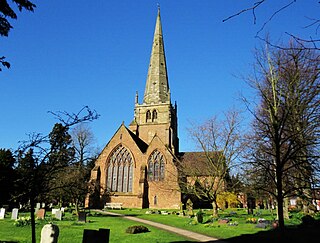
Solihull is a large market town, and seat of the wider Metropolitan Borough of Solihull in the West Midlands County, England. Solihull is situated on the River Blythe in the Forest of Arden area. The town had a population of 126,577 at the 2021 Census, and its wider borough had a population of 216,240 The town is located 7.5 miles southeast of Birmingham, 13 miles west of Coventry, 18 miles northwest of Warwick and 110 miles northwest of London.

Sir Percival Willoughby of Wollaton Hall, Nottinghamshire was a prominent land owner, businessman, and entrepreneur involved during his lifetime variously in mining, iron smelting, and glass making enterprises in Nottinghamshire. He was also an important investor in the Newfoundland Company.
Thomas Willoughby, 1st Baron Middleton, was a Tory politician who sat in the English and British House of Commons between 1698 and 1711 when he was raised to the peerage as Baron Middleton as one of Harley's Dozen.

Francis Willoughby, 2nd Baron Middleton, was a British politician who sat in the House of Commons from 1713 to 1727. He succeeded to a barony in the Peerage of Great Britain.

Coughton is a small village located between Studley 2.4 miles (4 km) to the North and Alcester, 2 miles (3 km) to the South, in the county of Warwickshire, England. The village lies 19.3 miles (31 km) from Birmingham on the Birmingham–Alcester A435 road, which here follows the line of the Roman road Icknield Street. The village mainly consists of a number of houses on Sambourne Lane, Coughton Lane and farms and is primarily noted as being the location of the National Trust property, Coughton Court, which lies 400 yards to the east of the A435. The population according to the 2001 Census was 139, increasing to 157 in the 2011 Census.

Sir Francis Willoughby (1546/7–1596) was an English industrialist and coalowner, who built Wollaton Hall in Nottinghamshire.
Kingsbury School is a coeducational secondary school located in the village of Kingsbury, Warwickshire, England. Its main catchment area is Kingsbury, but students also attend from a number of neighbouring villages, such as Hurley and Whitacre Heath, Picadilly, Wood End, Bodymoor Heath and Middleton.

Thomas Ridgeway, 1st Earl of Londonderry was an English administrator active in Ireland, in particular in the Ulster Plantation.

St John the Baptist is an Anglican parish church in Middleton, Warwickshire. It is a Grade II* listed building. The 17th-century ornithologist Francis Willughby is buried there.

Sir Henry Willoughby was a Knight of the Body to Kings Henry VII and Henry VIII and MGO.
The Wonderful Mr Willughby: The First True Ornithologist is a 2018 biography, written by Tim Birkhead, about Francis Willughby (1635–1672), an English ornithologist, ichthyologist, entomologist, and Fellow of the Royal Society. Birkhead's work is the first book-length biography of Willughby.
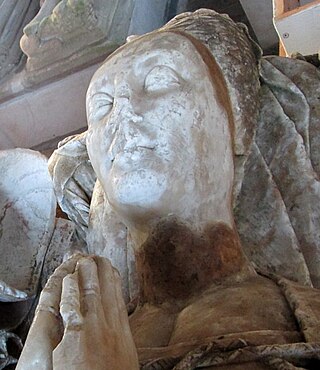
Margaret Willoughby born Margaret Freville became Lady Willoughby and Margaret, Lady Bingham was an English heiress and matriarch.